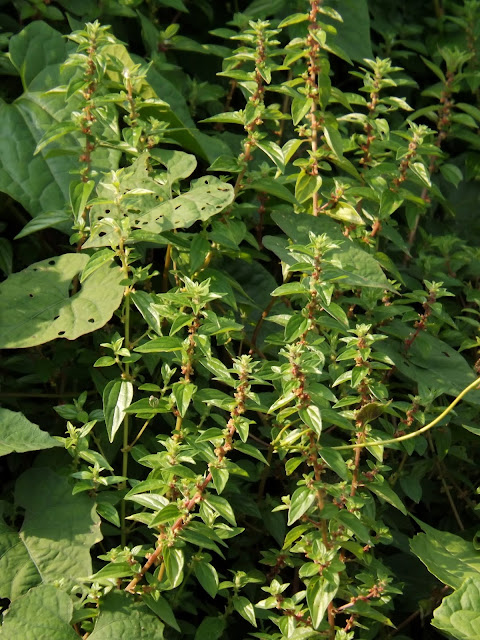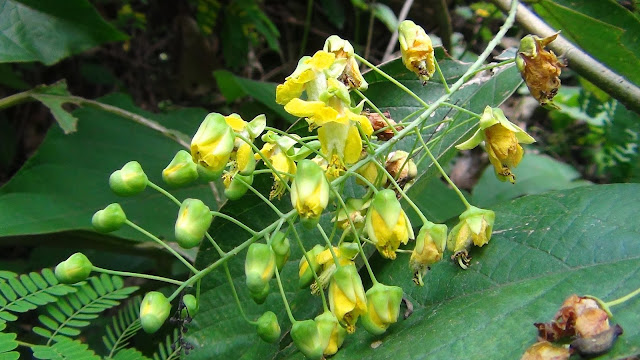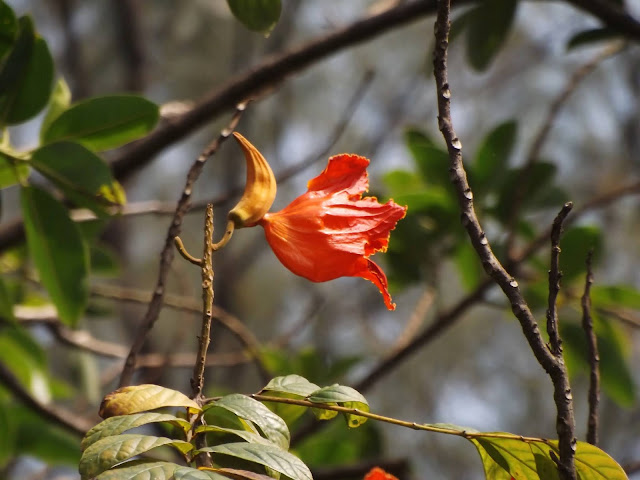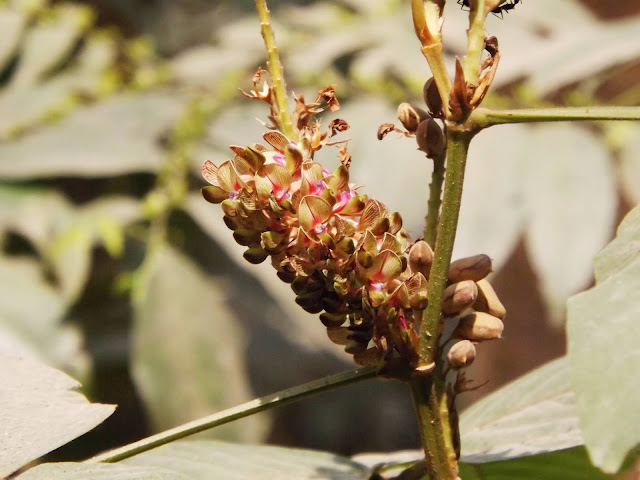Pani najok or Water mimosa, Neptunia oleracea
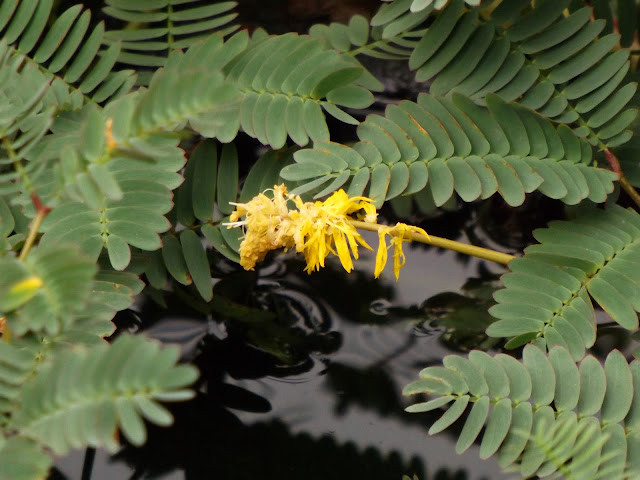
Pani najok or Water mimosa ( Neptunia oleracea ) is a creeping perennial aquatic herb, rooting at the nodes with spongy and slender stems, attaining a length of 2-3 m. The sensitive plant without prickles is found near or in water bodies, ditches, ponds and swamps all over Bangladesh sporadically. There are some doubts about the place of its origin. However, it has spread to both tropics. Other names: Pani lajok, Pani lojuk, Pani lojjaboti (Bang); Sensitive neptunia (Eng). Leaves are sensitive as other members of Mimosa, like Sensitive plant ( Mimosa pudica ). These are pinnately compound, petioled; leaflets 8-36, tiny, opposite. Flowers are bright yellow, in pedunculated spike inflorescence, consisting of 30-50 flowers. Upper flowers are bisexual and lower flowers sterile. Flowering occurs at the end of rainy season. Fruits are pods, flat, 2-3 cm long, dehiscent; seeds 4-8, obovoid, compressed. It is propagated by seeds and vegetative parts. The plant is cultivated and c...

